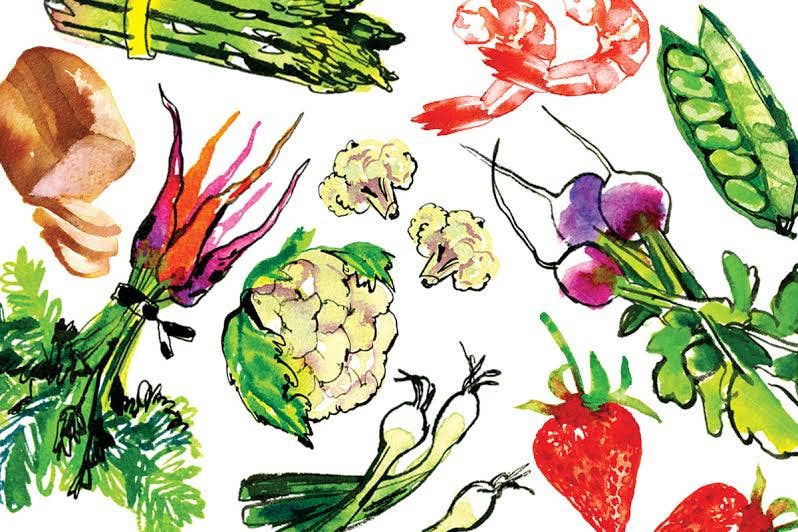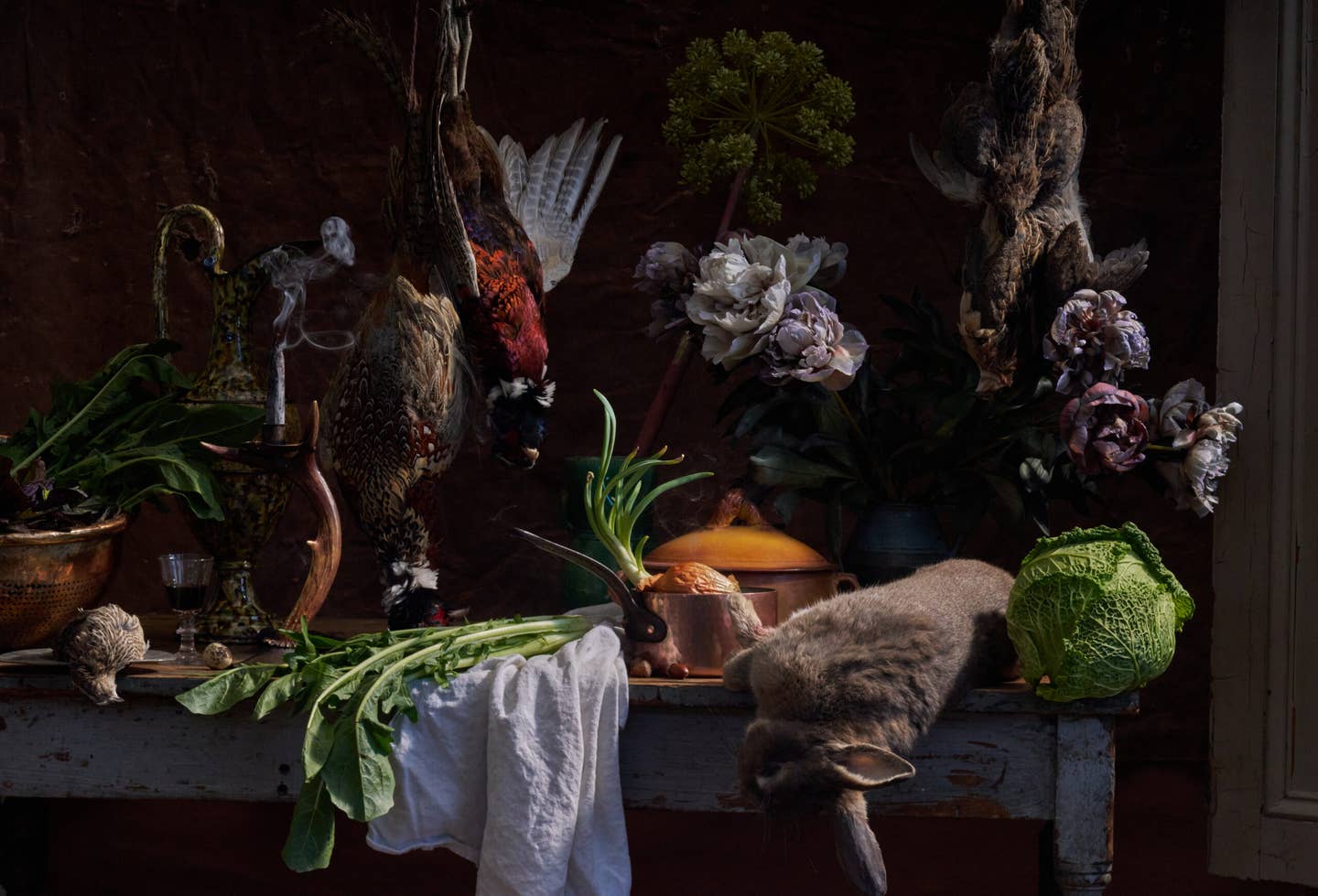
Looking for the Last Great Apricot
Can it be that this once bright, sweet, luscious fruit has been lost forever to tasteless, cottony mediocrity? Well, almost—but not quite.
My Aunt Elly and I have different recollections of the apricot tree. She, in fact, denies that it ever existed. She says that back in the early 1960s, tucked amid her typical Southern California-backyard collection of citrus trees, there was a plain old peach tree. I may have been only 6 at the time, but I remember it differently.
I not only remember the apricot tree, I am haunted by it—by its branches, heavy with small orange globes; its intoxicating roselike fragrance; its brief but glorious season. And also, for that matter, by its brief but glorious existence: Aunt Elly soon moved to another house and I moved to New York. I've since visited countless orchards on the East Coast, scoured the city's farmers' markets, and even succumbed to pretty, but consistently disappointing, supermarket apricots—all to no avail. Nothing matched Aunt Elly's fresh apricots. Hers were ambrosial, especially on sunny afternoons, warm from the tree—whether Aunt Elly admits its existence or not.
Very few people, I've found, have had similar life-affirming experiences with fresh apricots. Most people are ambivalent about the fruit, and usually eat them dried. With this in mind, I set out last summer to see if those unforgettable fresh apricots were just a warped childhood memory.
To do this, I returned to California, where "ah-pricots" are called "ay-pricots"; where, from early May to mid-July, 400 growers produce more than 90 percent of the American crop (only 15 percent of which is destined to be consumed fresh); and where a half-dozen prominent commercial varieties are just the tip of the orchard. More than 60 kinds can be counted, many of them new hybrids.
The center of the apricot industry used to lie near the coast, in the Santa Clara Valley, an area that, during the 1920s and 1930s—the golden age of the California apricot—was affectionately known as the Valley of Heart's Delight (it boasted a profusion of fresh produce). The 1960s, however, saw the beginning of the high-tech revolution. The computer (and everything related to it) moved in; Heart's Delight became Silicon Valley; and most growers were forced up and over the Diablo Range into the San Joaquin Valley. Of what was 20,000 acres of apricots, only about 2,000 remain, 35 of which make up the Forge Ranch in Hollister, the first stop on my trip.
"I started back in 1955," says George Bonacich, who works the apricot orchards on the ranch, "and my father grew apricots before that, and his father before that." Bonacich's grandparents settled in the area in 1923. Back then, when you grew apricots, you grew blenheims, a delicate variety brought from England in the 19th century. Although not the most profitable apricot, Bonacich has stuck with it. "Blenheims are finicky," he says, "but the sea breezes bring moderate temperatures—warm days and cool nights that let them mature slowly and develop flavor and sweetness."
It is that very sweetness that makes the blenheim perfect for drying and, when eaten right off the tree, a luscious, honeyed but tangy apricot indulgence. I bite into one. The juice dribbles down my chin, and, for a brief moment, I am 6 years old again. "Nothing beats a blenheim," says Bonacich.
Well, maybe. The blenheim is low-yielding, too fragile to ship in its fresh state, and a victim of silicon displacement: That move over the hills planted the center of the apricot business, including the Bonacich family's main orchard, in and around the town of Patterson. Here, 50 miles east, fierce heat turns the blenheim's flesh to mush. (Such sensitive apricots suffer from what growers call "pit burn": the pits retain heat and actually scorch the inside of the fruit.) As a consequence, growers began favoring the tilton and in 1968 introduced an even bigger, hardier, more productive variety—the patterson, named for what has become the new apricot capital of America. Originally developed for canning, it is now a multipurpose apricot and, for better or for worse, accounts for more than half of the California market.
"These 'cots have to be picked now," says Bonacich. "If too ripe, they're going to be pie." We have moved to his 160-acre Patterson orchard; it is noon, 106 degrees, and a dozen pickers, balanced on ladders, are tossing green-tinged pattersons into buckets. These are dumped into bins and trucked to local packing houses. The patterson may have an alluring bright orange hue, but it lacks the subtle, penetrating flavor of a blenheim—especially when picked too early, which it almost always is. "I get docked for ripe fruit," sighs Bonacich. "Stores want shelf life."
Such is the crux of the apricot dilemma: Store-bought apricots are ripened in the packing crate, so most shoppers end up with hard, mealy, tasteless apricots—like the patterson and the castlebrite. This latter variety is a favorite of farmers in the San Joaquin Valley. It matures early, in May, when consumers are willing to pay premium prices for pretty apricots. The castlebrite, however, is bland, sometimes sour, and in one bite it can discourage customers for an entire season—or a lifetime. No wonder annual per capita fresh apricot consumption in America is a pathetic 3.5 ounces, and overall production half of what it was at its peak.
The American apricot's best hope may reside in its heritage. It is a stone fruit, part of the peach, plum, cherry, and almond family, and indirectly related to the rose. Originating not in Armenia, which was once a common theory (hence its botanical name, Prunus armeniaca), but in the mountains of northern China as early as 2200 b.c., apricots spread along the silk route through Central Asia to the Mediterranean. Ancient Persians called them "eggs of the sun"; first-century a.d. Roman naturalist Pliny the Elder wrote of praecoces; and Shakespeare used the fruit as a means of seduction: His Queen of Fairies plied her beloved with "apricocks" in A Midsummer Night's Dream.
Today, what may be called the great apricot belt runs from Turkey to China. Here, apricots grow in all their glorious diversity: one can find white, black, gray, and pink apricots, from pea- to peach-size. Some 2,000 varieties grow in China alone. California clearly has a long way to go. But fruit breeders, tinkering with stone fruits at the U.S. Department of Agriculture's California research stations, have created both better-tasting practical varieties and specialty hybrids. At the 20-acre Fresno station, I pick a rare white apricot—its pale skin, pink blush, and translucent flesh similar to that of a white peach—and a Pakistani hunza, a tiny, juicy apricot with tan-orange skin and flesh, a mysterious musky flavor, and enough sugar to rate a 32 on the Brix scale (the fruit farmer's standard scale for measuring sweetness). The typical castlebrite scores 10; the blenheim, 18.
Many experimental apricots, however, are too small, too soft, or too low-yielding to have any impact on the industry. Others are adapted to specific (i.e., impractical) growing conditions. For instance, try as I might, I could not find another hunza anywhere; spring rains had ravaged the crop.
Spring rains have long been the bane of the apricot grower; "cultivar rustlers" are a new worry. Floyd Zaiger, perhaps the leading developer of apricot hybrids, has a 125-acre lab and orchard in Modesto, and he has had to protect his plumcots (half plum, half apricot), trademarked apriums (more apricot than plum), pluots (more plum than apricot), and peacotums (an even mix of peach, apricot, and plum). More than once, agro-thieves with hopes of reproducing a prized new variety have been caught stealing cuttings in the dead of night.
The future may lie in these exotics—the velvety purple skin, crisp scarlet flesh, and apricot aroma of Zaiger's pluot is intriguing—but the traditional apricots are still my favorites: the last blenheims lingering on the gnarled trees of Mike McKinney's grove on the fringe of San Jose, for example, or the much-loved but commercially extinct English moorpark, legendary for its greengage-like flavor, that I sampled at Mariani Orchards (the Chateau Petrus of apricot growers) in Morgan Hill. So, no, my memory had not deceived me all these years. Good fresh apricots do exist. I just had to go to California, to the orchard—to the tree—to get them. And I even have a tree of my own now: Our conflicting memories aside, Aunt Elly, honoring my passion for apricots, planted a blenheim tree four years ago. The first crop is expected next June.
Keep Reading
Continue to Next Story










